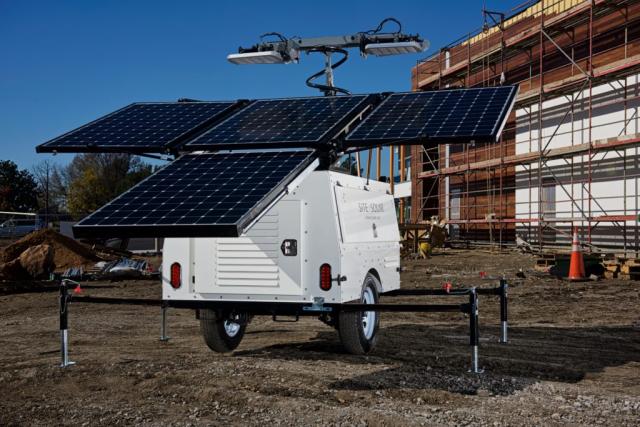
Permian operators are adopting solar energy as a new means to power wells throughout the basin. (Source: SiteSolar.com)
Solar power is gaining momentum in Texas’ most prolific oil-producing basin. SiteSolar’s solar-powered generators are being tapped by Permian operators for their cost-efficient and wellhead monitoring abilities, according to the company’s COO.
Though still on the rise, the company has seen the majority of its business come from the oil and gas industry, SiteSolar COO Randy Heckenkemper said.
The solar generators work as a wellhead power solution replacement for diesel-powered generators. The new technology is environmentally friendly as it contributes zero CO2 emissions, which has become priority for some of the oil industry’s biggest players.
“Our wellhead power solution replaces existing diesel generators that are used to provide 110 volt power of well monitors and electric valves for a lot of the wells in the Delaware and Midland basins and probably throughout most of the Permian,” Heckenkemper said.
Diesel generators typically consume about 18 gallons of fuel per day and have to be refueled every second or third day. However, SiteSolar’s sun-powered technology charges its large battery bank allowing uninterrupted power both day and night.
“With most diesel generators if they run out of fuel or break down, the well stops production instantly. In our case, we have the battery backup, so we have time to get out there and fix anything if that happens,” he said.
The solar panels then commute data to be monitored by SiteSolar. If any problems are detected with the wells, an alert is forwarded to the operator and SiteSolar and responded to immediately, Heckenkemper noted, before an incident occurs.
“We have quick response time for any of our units. People can get to them within two hours and we monitor them daily. They [operators] integrate our tracking software into their monitoring system of their wells so they can get a complete understanding,” he said.
“The best deal is that the oil companies like us because we monitor them and it’s a clean, renewable energy that doesn’t need any fuel. They are big fans of solar even though they produce the oil that makes diesel,” Heckenkemper said.
In 2018, ExxonMobil Corp. took a step into its clean energy initiatives through power-purchase agreements with Lincoln Clean Energy. Lincoln, which was acquired by wind provider Ørsted, agreed to supply Exxon with 500 megawatts of wind and solar power in the Permian.
RELATED: ExxonMobil Turns To Solar, Wind For Power In Permian
Aside from axing diesel, SiteSolar’s new renewable technology takes between 120 and 180 fuel trucks per year off crowded highways leading to the Permian Basin oil fields, the COO said.
Going forward, SiteSolar and its partner GenPro LLC are working to connect their units at the request of their operator customers. Heckenkemper said the idea is to create a micro-grid of solar trailers to facilitate larger power needs.
Although Heckenkemper doesn’t feel solar will abolish diesel just yet, considering diesel provides much more power than SiteSolar is currently capable of, he said the product is another tool in the toolbox.
Heckenkemper projects SiteSolar will have 400 to 500 generators in operation by the end of June and between 1,000 and 1,200 units by year-end 2019, with intentions to triple that figure in 2020.
Recommended Reading
Seadrill Awarded $97.5 Million in Drillship Contracts
2024-01-30 - Seadrill will also resume management services for its West Auriga drillship earlier than anticipated.
TotalEnergies Starts Production at Akpo West Offshore Nigeria
2024-02-07 - Subsea tieback expected to add 14,000 bbl/d of condensate by mid-year, and up to 4 MMcm/d of gas by 2028.
Well Logging Could Get a Makeover
2024-02-27 - Aramco’s KASHF robot, expected to deploy in 2025, will be able to operate in both vertical and horizontal segments of wellbores.
Shell Brings Deepwater Rydberg Subsea Tieback Onstream
2024-02-23 - The two-well Gulf of Mexico development will send 16,000 boe/d at peak rates to the Appomattox production semisubmersible.
E&P Highlights: Feb. 26, 2024
2024-02-26 - Here’s a roundup of the latest E&P headlines, including interest in some projects changing hands and new contract awards.





